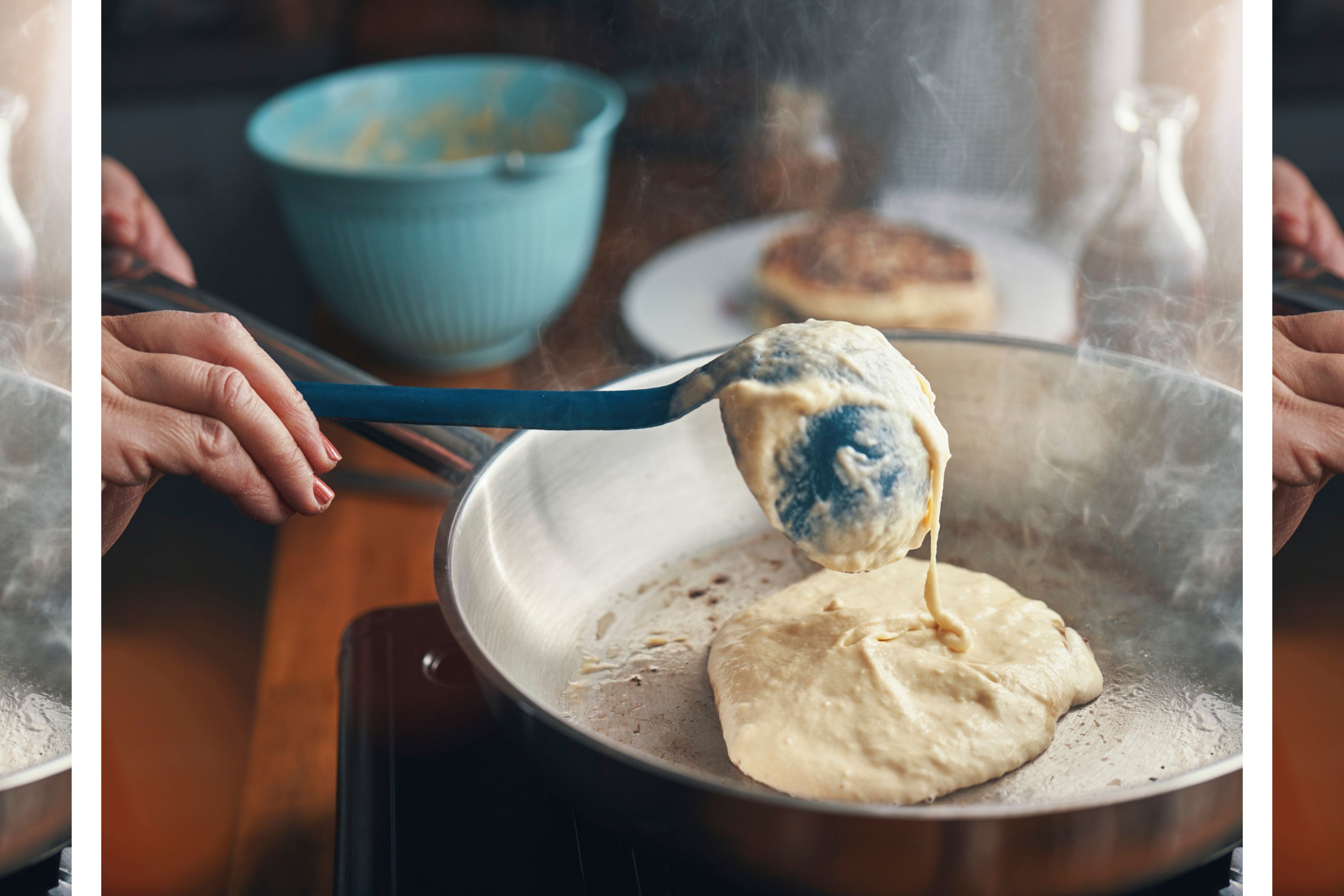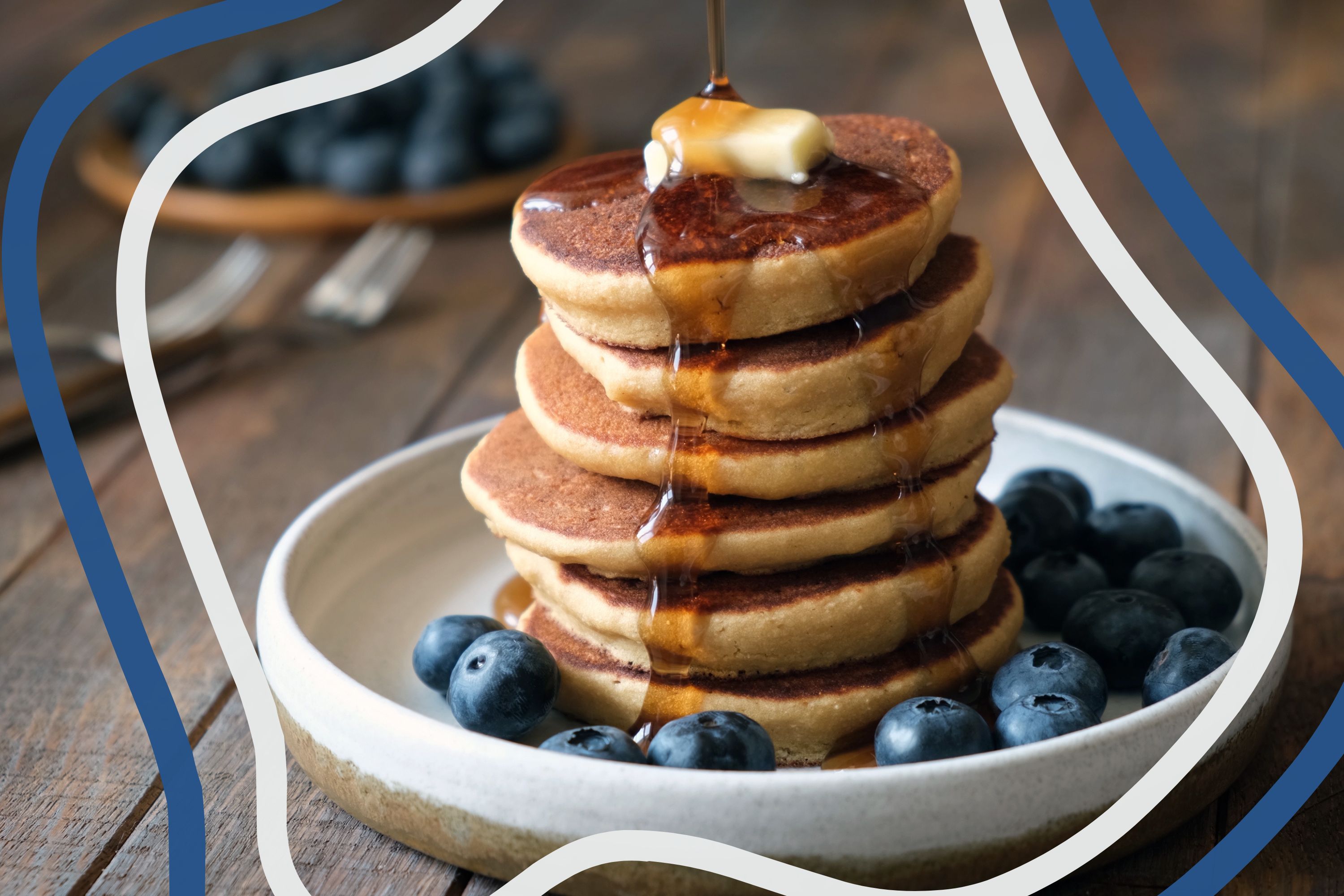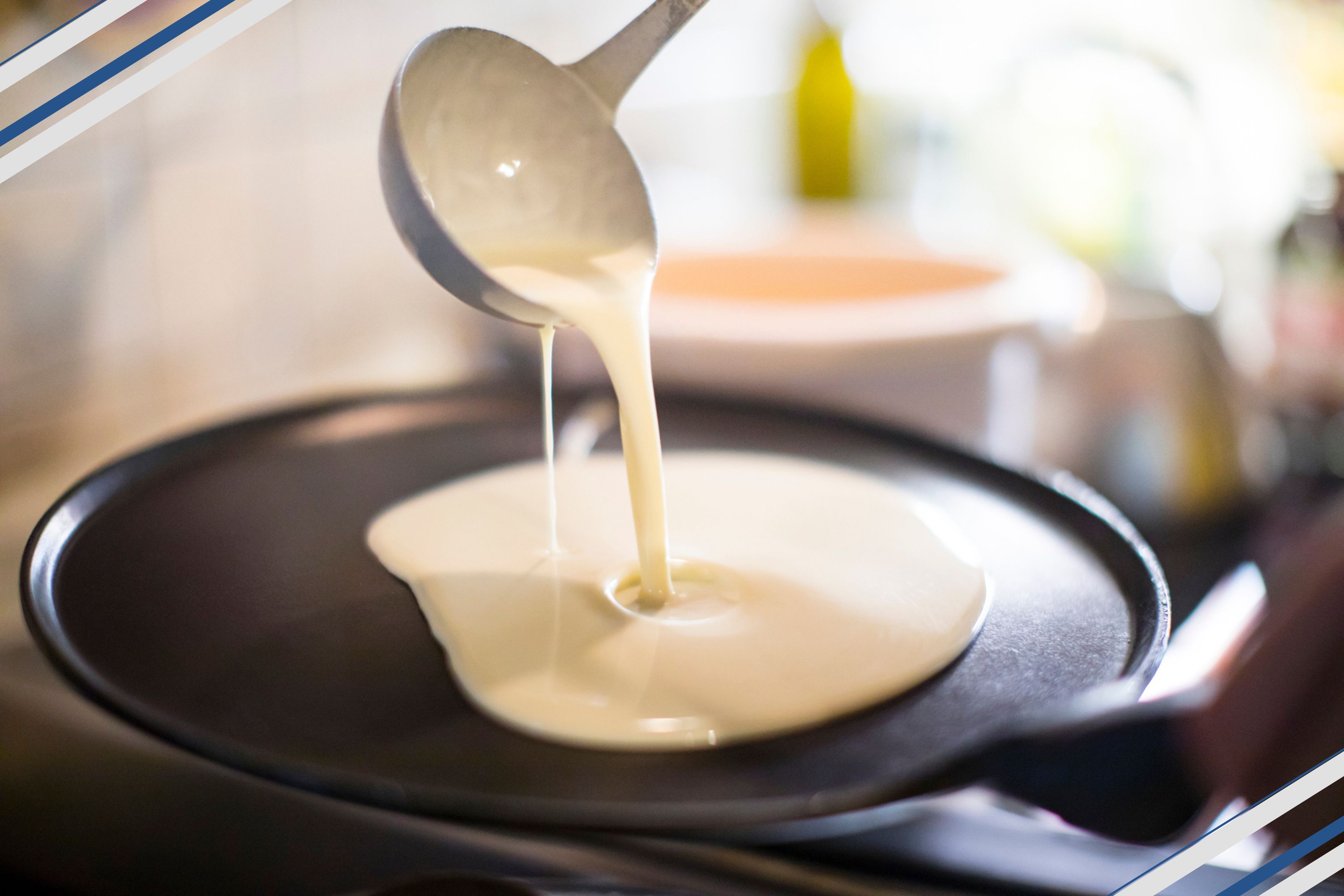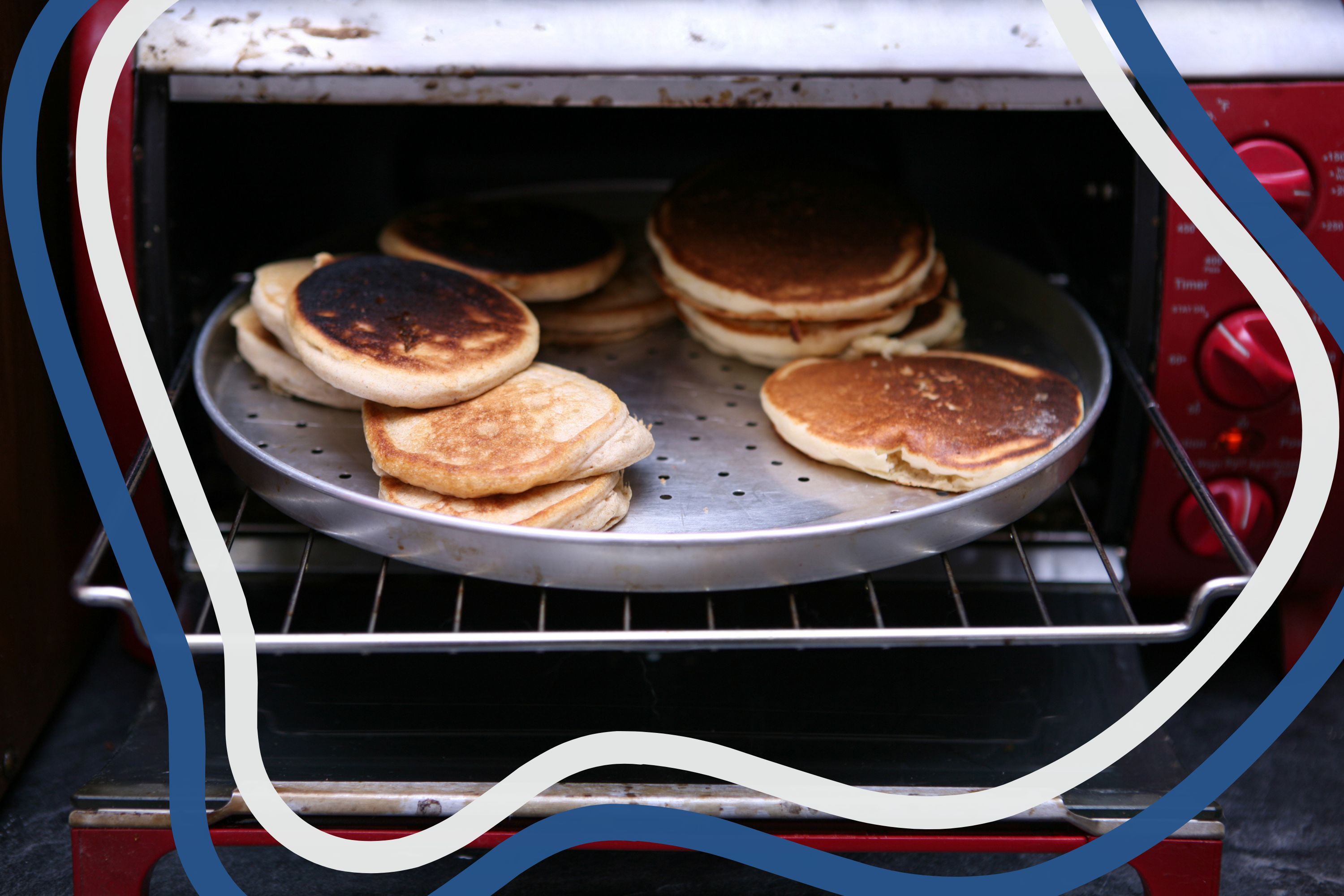What is the best flour for pancakes? 11 common pancake-making problems fixed
Your pancake problems are solved - from thick batter to burnt pancakes, our expert is here to save the day...


- What is the best flour for pancakes?
- Can I use self-raising flour in my pancakes?
- How do I stop my pancakes from sticking?
- How do I make sure my pancake batter isn’t too thick?
- What do I do if my pancakes aren’t cooking?
- How do I stop my pancakes from burning?
- How do I flip pancakes in the pan?
- What can I add to stop my pancakes from being too bland?
- How can I make my pancakes dairy-free?
- How can I make gluten-free pancakes?
- How do you make pancakes fluffy?
Wondering how to stop your pancake from sticking to the pan? Not sure which flour to use to make the best pancakes? We're here to help.
Pancakes are a rather simple treat to make. You only truly need three ingredients when following a classic pancake recipe meaning they should be rather straightforward to make. However, according to Too Good to Go around 17.5 million pancakes are wasted on average each year on Pancake Day.
Jamie Crummie, co-founder of Too Good To Go, adds: “Pancake Day is one of the most popular dates in the calendar that involves food and our data shows just how many of us Brits serve up a pancake or two to mark the occasion. It is interesting to see that a day historically dedicated to eating up ingredients so that they don’t go to waste, is now actually contributing to our food waste problem. With over 17 million pancakes potentially going to waste..."
In order to help reduce waste and really make the most out of pancake batter and readymade pancakes, we've rounded up some of the most commonly asked questions and answered each and every one with a top tip from our expert Food Editor, Amanda James to avoid pancake disaster.
What is the best flour for pancakes?
The most popular choice of flour for pancakes is plain flour or all-purpose flour. Of course, it does depend on the recipe you're following, however. If you're making Scotch pancakes, you're likely to need self-raising flour, buckwheat flour for buckwheat pancakes, and gluten-free flour for the gluten-free version.
Food Editor, Amanda James says; "The best all-round flour to use would be plain flour. Plain flour will make sure your pancakes are light and airy without being too fluffy, it is great for making thin pancakes like crêpes. If you are after fluffy American-style pancakes then I would add a teaspoon of baking powder which will help get a rise to the pancakes."
"When making your pancakes I would always whisk both the dry and wet ingredients separately to make sure everything is combined, then for best results slowly add the wet ingredients into the dry ingredients to get an evenly incorporated mixture with no lumps. Whisking your flour separately first not only incorporates air but also creates an evenly distributed flour mixture and ensures you have no lumps in the flour before incorporating the wet ingredients. You can of course always sieve the flour first which will also ensure no lumps but for saving time whisking in a bowl is quicker."
Parenting advice, hot topics, best buys and family finance tips delivered straight to your inbox.
Can I use self-raising flour in my pancakes?
Yes, you can use self-raising flour to make pancakes but be aware that self-raising flour will give your pancakes a thicker texture. They will look a bit more like American or Scotch pancakes - much thicker and more popular as a breakfast pancake stacked and drizzled in golden syrup.
Food Editor Amanda James says; "Self-raising flour contains the baking agents already which creates a thicker batter. Use self-raising flour for making American-style fluffy pancakes, this will create thicker, fluffy pancakes."

How do I stop my pancakes from sticking?
As pancakes are really thin, sticking is one of the most common pancake problems. You don't want to use too much oil or butter to grease the pan as this will give the batter more of an omelette-like consistency - but what to do?
Lightly heat the pan then remove from the heat, place butter or oil in the center then take a piece of greaseproof paper and use it to grease the pan. Make sure every part of the surface is covered as even a little spot of the ungreased pan can make the pancake stick.
Food Editor Amanda James says; "Using a non-stick frying pan or a cast iron skillet pan will help ensure no sticking occurs. It is key to make sure your pan is clean and dry but well-lubricated before you begin frying. Try to wipe down the pan and re-lubricate after each batch as this avoids sticking and burning."
How do I make sure my pancake batter isn’t too thick?
A thick batter can lead to lumpy, undercooked pancakes. Thankfully pancake batter is quite resilient so it’s easy to fix. Add more milk and whisk until the batter is at pouring consistency.
Food Editor Amanda James says; "If you find your pancakes are not cooking, make sure you reduce the amount of batter you use next time so you get a more evenly cooked pancake, and ensure the heat isn’t too high so you get an even cook all over. If the heat is too high it will simply char the outside and not cook the middle meaning you get burnt pancakes that are raw in the middle."
What do I do if my pancakes aren’t cooking?
There’s nothing worse than that horrible wobble in the middle of the pancake that just won’t cook, but there is a simple way to avoid this happening.
Add less batter to the pan. Pour in half a ladle full of mixture and immediately turn it around in the pan so the pancake lies flat – there should be no pools of the mixture in the middle. Keep turning until the mixture is all used. Start with small amounts of the mixture until you are confident about how much you need to make a large pancake.
Food Editor Amanda James says; "If you find your pancakes are not cooking, make sure you reduce the amount of batter you use next time so you get a more evenly cooked pancake, and ensure the heat isn’t too high so you get an even cook all over. If the heat is too high it will simply char the outside and not cook the middle meaning you get burnt pancakes that are raw in the middle."
How do I stop my pancakes from burning?
You want the pan to be hot before pouring the mixture, this can lead to crispy, off-colour pancakes. Heat the pan on full, add the batter, and allow to set slightly then turn down the heat to a gentle simmer.
Food Editor Amanda James says; "To stop your pancakes from burning you can use oil rather than butter, this is because the longer butter is in the pan the quicker it will begin to burn (some people prefer using butter as this gives a creamier taste to the pancake). Using an unflavoured oil such as rapeseed oil is a good solution."
"Make sure you wipe your pan after each batch and keep it well lubricated too, this will help with any burning. Make sure you don't have the heat on too high or have the pan over your largest hob, use a medium hob on medium heat and this will stop your pancakes from burning."

How do I flip pancakes in the pan?
Make sure the pancake is fully cooked at the bottom and there isn't any liquid left on the surface. Run around the edges with a spatula and shake the pan to ensure the pancake is loose. Hold the pan with both hands in front of you (away from the hob surface), tilt it slightly forward then flip - and hope for the best.
If you've tried too many times and the flip just isn't happening, it's OK - you actually want to be able to eat some of them! To make pancakes that can be easily turned with a spatula, add a little more flour to the mix and pour the mixture into a smaller surface area. Turn the pancake in one swift, fluid motion.
Food Editor Amanda James says; "When coming to flipping your pancakes, it is important to have the pan well lubricated to help the pancakes move about, you can use an offset spatula or something similar to get under the pancake and move it around. When it comes to actually flipping - make sure the pancake is moving in the pan first, encourage the pancake to the edge of the pan, and in one swift confident movement flip the pancake. Be sure not to flip the pancake too high as this could break it and you want it all intact."
What can I add to stop my pancakes from being too bland?
We can all agree that the actual pancake mixture is a little flavourless, but how do you get the most flavour onto your pancakes?
Food Editor Amanda James says; "There are many ingredients you can add to your pancake batter or serve with your pancakes to lift the flavour. Try adding a tbsp or 2 of maple syrup to sweeten it up. You can add fruits such as blueberries which not only add flavour but a burst of colour, too."
"Add bananas for a natural sweetness or swirl through a tbsp of Nutella for the kids. You may need to take your milk ratio down slightly or add a spoonful more flour until you get a batter that is similar to PVA glue. Top your pancakes with other fruits such as strawberries or raspberries, or even a compote, or keep it traditional with sugar and lemon or even add a savoury element like crispy bacon."
How can I make my pancakes dairy-free?
If you want to celebrate Pancake Day this year with your favourite style of pancakes, but need them to be dairy-free or vegan pancakes – don’t worry! Replace regular milk with coconut, hemp, or other variations of dairy-free milk. If you’re looking to cut the eggs out too, use unsweetened applesauce or banana as the replacement.
Food Editor Amanda James says; "To make dairy-free pancakes simply swap the butter out for oil and use flavourless oil such as rapeseed so it doesn’t impact the taste."
"You can easily swap out regular milk with milk substitutes such as oat milk. Oat milk and other substitutes are sometimes starchier than cow’s milk meaning your pancakes could become more claggy and dense. However, oat milk is actually as creamy as whole milk so this is the best substitute, just ensure your consistency is the same as PVA glue. It is also best to look for unsweetened versions as alternative milk are often sweeter, but if you can’t just leave out any sugar the recipe may require."

How can I make gluten-free pancakes?
If you’re gluten intolerant or need to avoid traditional flour for any reason, there are recipes you can use to make delicious gluten-free pancakes. Replace the flour in any recipe with gluten-free plain flour to try and make gluten-free pancakes. Or, for a fail-safe way to make tasty pancakes that are free of gluten, use our gluten-free pancakes recipe.
Food Editor Amanda James says; "Generally speaking gluten-free flour can be in replacement for plain flour on most accounts, ensure you still add baking powder (make sure it's gluten-free too) and make sure the consistency is still like PVA glue and you will get the fluffy rise you desire). FREEE makes a great gluten-free flour for both plain and self-raising, or following a recipe using buckwheat flour will also be gluten-free."
How do you make pancakes fluffy?
To make fluffy pancakes, we recommend following either our American pancake recipe or our recipe for fluffy Japanese pancakes. Both use baking powder to help the mixture rise in the pan. One of the things that helps the pancakes achieve that fluffy finish.
Food Editor Amanda James says; "To make your pancakes as fluffy as possible we would recommend not overbeating your batter, so whisking the wet and dry ingredients separately first before combining helps. Then when whisking together do it gently and only just until the mixture comes together."
"Let the batter rest for half an hour before cooking your pancakes. This will create bubbles in the batter which is all part of creating fluffy pancakes. Lastly when it comes to frying the pancakes, let the pancake create bubbles on the surface before flipping, and try to only flip once so you don't lose air or bubbles!"
Related Features:
- How to make pancakes in an air fryer this Pancake Day
- What to do with leftover pancakes
- How many calories are in a pancake?
- Pancake recipes
Video of the Week

Jessica Dady is Food Editor at GoodtoKnow and has over 12 years of experience as a digital editor, specialising in all things food, recipes, and SEO. From the must-buy seasonal food hampers and advent calendars for Christmas to the family-friendly air fryers that’ll make dinner time a breeze, Jessica loves trying and testing various food products to find the best of the best for the busy parents among us. Over the years of working with GoodtoKnow, Jessica has had the privilege of working alongside Future’s Test Kitchen to create exclusive videos - as well as writing, testing, and shooting her own recipes. When she’s not embracing the great outdoors with her family at the weekends, Jessica enjoys baking up a storm in the kitchen with her favourite bakes being chocolate chip cookies, cupcakes, and a tray of gooey chocolate brownies.